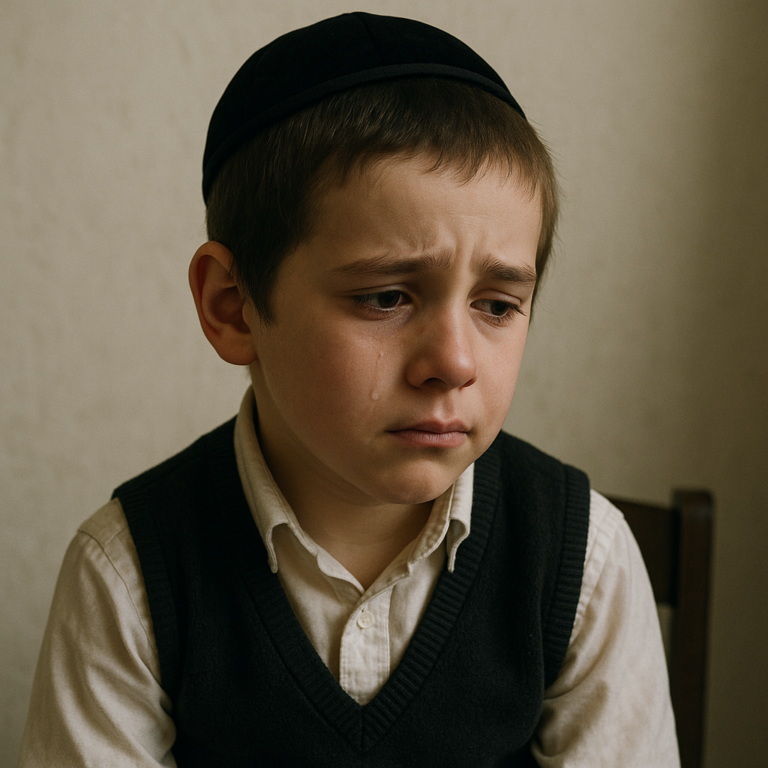 [By Rabbi Yair Hoffman]
[By Rabbi Yair Hoffman]
A religious friend who works in an office in Manhattan related the following story:
A formerly observant colleague came into my office and said, “You are going to find what I did this past Shabbos pretty bizarre. I had a Slider at White Castle – and they are the best burgers by the way – before I took a trip. After I ate the burger, I bentched and said Tefilas haDerech.”
The incident is certainly quite sad and should motivate us all to double down our efforts in bringing our estranged brethren back to their Torah birthright. The episode, however, does bring up a halachic question. Should someone who has consumed a treif burger bentch afterward?
A THIEF WHO BLESSES
Many of us are familiar with the verse in Tehillin (10:3) “Botzea beireich ni’aitz Hashem – A thief who blesses blasphemes Hashem.” The Gemorah uses this verse to describe someone who blesses on stolen food. The Mishna Brurah (196:3) rules that it is not only stolen food to which this verse can be applied – but also to someone who purposefully eats non-kosher food.
Why might this be so? An analogy might be in order here. When I was much younger, I recall speaking to a World War Two veteran, a D-Day plus three soldier, who cried when he saw young college kids burning the American flag in their protesting the Vietnam War. He remarked, “They have no idea what that flag represents, not only to me but to the millions of Americans that fought and died on the beaches of Normandy and throughout Europe.”
Kosher food consumption as well is the flag of the Jewish people. It represents the ideals and spiritual qualities of the Jewish nation. It represents the idea that flouting the flag while at the same time reciting a blessing on having flouted it would, quite conceivably, be considered analogous to blaspheming Hashem.
So it would seem, at first glance, that the Salisbury-Steak-consuming accountant should not bentch.
ISN’T THE BUN KOSHER?
But wait – let’s not crunch our numbers too quickly here. From a statistical point of view, a good number of hamburger bun manufacturers produce their buns under kosher supervision, and even if not – most bread manufacturers in the United States do not use non-kosher oil. From a technical point of view – then, one would probably have to bentch over the bun. The bun would probably have been kosher.
On the other hand, the White Castle hamburger was probably placed on the bun while it was still hot. Juices from the meat probably entered the bread rendering a good portion of the bread truly non-kosher. But what about the dry section of the bun? Was taste infused into it to render it non-kosher? And if the taste of the non-kosher meat is not infused into the bun, is there enough of the dry sections of the buns to create an obligation to bentch?
T’TAAH G’VAR
Let us first familiarize ourselves with the concept of T’taah G’var – the bottom one wins (See Yore Deah SIman 91). Halacha distinguishes between the top layer and the bottom layer when a hot item comes in contact with a cold item. When hot non-kosher meat, for example, is placed on top of something cold that is kosher, the halacha states that the bottom one wins and aside from any oil or juices that mixed into the kosher meat – a taste infusion has not taken place. If it happened the other way around, however, where the bottom piece was hot – then we do assume that a taste infusion has taken place.
Thus, getting back to our case, the top part of the bun would have infused the non-kosher taste of the hamburger paddy – up to the thickness of something called K’dai klipah – a peelable depth. One can assume that most breads or buns can remain intact when peeled to the depth of a Matzah (four millimeters thick). The bottom part of the bun would not have infused taste, because of the concept of T’taah Gvar – the bottom one wins.
HOW MUCH IS A K’ZAYIS
There is, of course, great debate as to the minimum size requirement that is necessary in order to recite an after-blessing. Although the Talmud teaches us that it is the shiur of a k’zayis – the volume of an olive, modern Poskim are unsure as to how large of a volume this is. Most Poskim who follow the Mishna Brurah hold that the shiur for a k’zayis in order to recite Bentching is half of an average size egg – about 28 cubic centimeters.
A quick glance at a photo of a White Castle hamburger reveals that there is certainly a kezayis of bread both on the top bun – even after we remove the peelable layer of bread. There is significantly more than 28 cubic centimeters on either the top bun or the bottom bun.
There is one thing left to do, however. In case our Slider-loving former Yeshiva student might be reading this we should appeal that he come back to the glorious heritage of his forefathers. So we do so in the letter below:
Dear Anonymous Manhattan Accountant (AMA),
Ever since Mount Sinai, your forefathers have been keeping both the laws of kashrus and the laws of Shabbos. Your great-grandfather, your grandfather and your father did so as well. Judaism is not just about rituals, however. It is about a dynamic relationship with G-d. When we keep His laws and pray to him, including Bentching, we are furthering a relationship with Hashem – cleaving to Him in all areas of life.
Dear A.M.A., I invite you to a Yeshiva davening where a meaningful lecha dodi is sung on a Friday evening, or on a day of Rosh Chodesh where King David’s Hallel is so beautifully recited. Get yourself a Chevrusa-ship in a dynamic and powerful Beis Midrash on a Thursday night and learn Torah with the background noise of hundreds of other Jews studying G-d’s Torah.
We may not have Sliders, but the beauty of Torah will certainly outweigh any appeal of rehydrated meat and onions.
We look forward to having you back,
Hatzlacha.
The author can be reached at [email protected]











18 Responses
When Jews go off the derekh, they rarely go all in once. Its unusual that someone who still make brachos even after they stopped keeping kosher. Usually making brachos goes first.
It’s good to know that all of the world’s problems are now solved.
#2, are you waiting until all the world’s problems are solved before learning a little Torah?
It’s hard to believe this story, but the first thing i would have asked him, would be if he said retzey 🙂
Should someone who has consumed a treif burger bentch afterward?
True he did an avaira, but still it would seem that there is a mitzvah to bentch.
I think that the bun of a white castle slider is made with milk, so I think that would add a level of CHaNaN, right?
i just made a brocha on my tropicana orange juice
I thought this was a news website
akuperma: Wow, I agree with you on something. The brachos do go first. What it tells me that the person involved saying that was a cry for help.
I knew a teenager who asked a shaila about that to a Rov. The Rov answered, “don’t bother me with such naarishkeit.” The teen was looking for help and the Rov didn’t recognize that. B”H, we were able to help that teen and get him back home and on the right path.
Look, he recognizes a creator. Don’t judge his dietary choices, but those sliders do look tasty! Next you will ask if the bun was yoshon…lol. Hmm was the milkshake cholov stam? Gawd! Where will it end?
Do White Castle sliders have bugs in them? You’d better examine them quick!
Also, this story is not true. I know because nobody would possibly say that White Castle burgers are the best. They are known for being cheap–not for being the best.
Rabbi Hoffman fails to distinguish between kosher and kosher certified. The jews in the midbar didnt have a multimillion (maybe even billion) dollar industry called “Kosher”. Obviously white castle isnt kosher, but the monopoly of kosher supervisors has made keeping kosher prohibitively expensive.
Proudjew, do you have an axe to grind?
If you actually read the article you would see that the author does say that the bun is likely kosher if not kosher certified…
#12 nobody is doing a favor for th one above by keeping his torah……matzoh, tfilin, tuition etc
If I’m not mistaken, the question of whether or not to make a brocha on something treif is a machlokes Rambam and Raavad. Just don’t recall the mareh makom offhand.
There is a well established Halachic position that cruelty to animals is irrelevant to the laws of sh’chita. If a person says that the whole point of sh’chita is to minimize cruelty to animals, it causes the issue to be examined in its totality. Animals that are hunted would certainly not pass a criterion based on minimization of animal suffering. However, animals that are slaughtered in an organized supervised fashion may very well pass that criteria. I wouldn’t recommend treif meat, but I also may not be enthusiastic about debating the issue either.
Rabbi Hoffman fails to distinguish between interesting and relevant. That’s fine when it it’s about white castle, but not when it’s about tropicana.
#15 the originality of the halacha is brochos 35 a sholoshe sheochla….if dover haoser chaive bezmen see mareh mekomos for the machloka and where in S’U bercos hapayiros EG someone who has to eat treif asekiach nefes is obligated to brooches. Shulchen urech simen 196